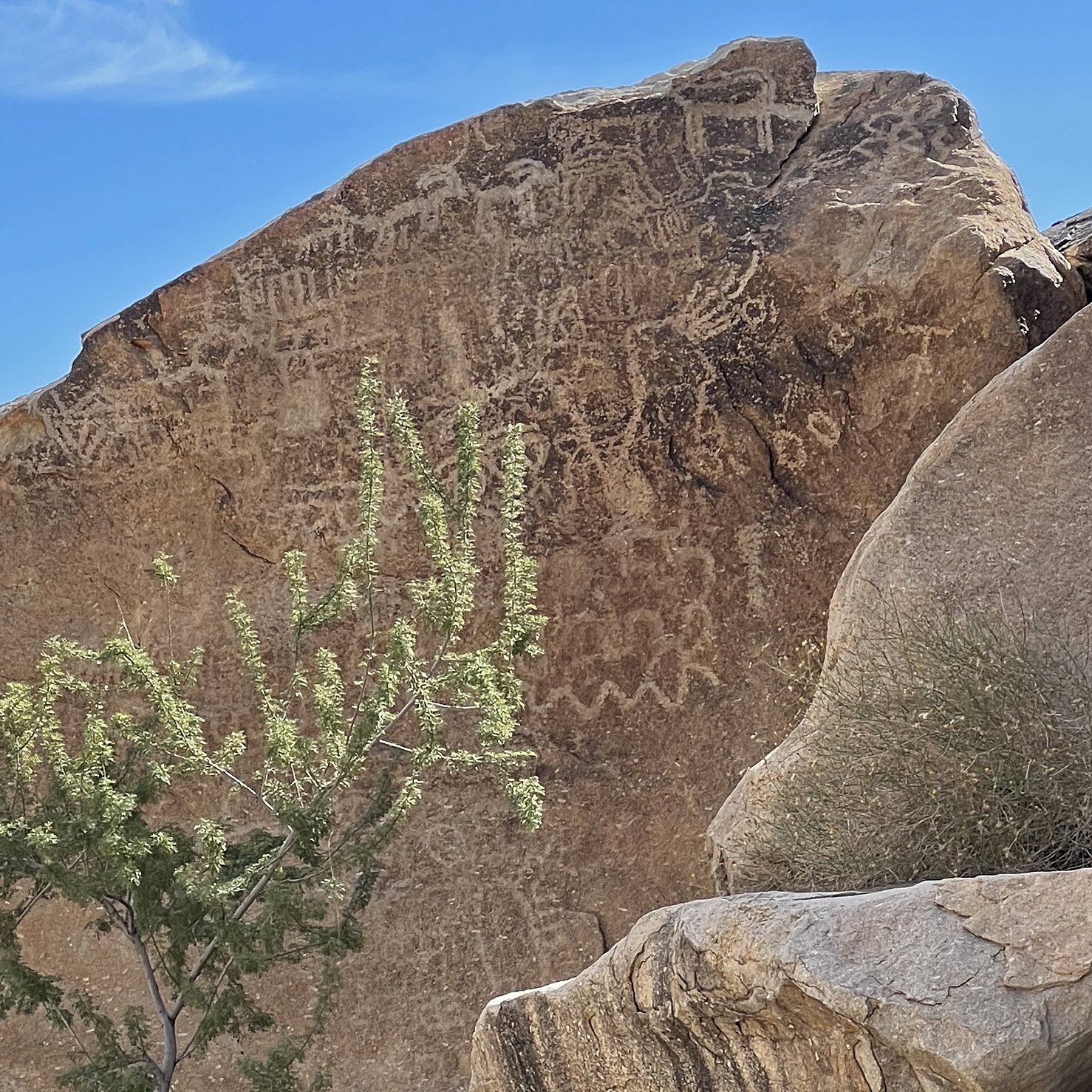East Mojave Desert Petroglyph Safari - Nevada
Explor Date: October 2 of 2023
To borrow a phrase from Stephen King, if you’re one of my “constant readers,” you’re probably aware of my proclivity towards exploration, especially when giant rocks, abandoned cars, dangerous mines, dirt roads, petroglyphs and the Mojave Desert happen to be the carrot. This trip checked off a number of those boxes, and more. I’d read about (and seen pictures of) an out-of-the-way spot in southern Nevada that chipped my interest. So one weekend, I left the confines and congestion of southern California and set to see what I could find, in southern Nevada. This is my report.
It was the first time for my latest Tacoma to get off the pavement, which is a kick even on a fairly smooth graded gravel road. It wouldn’t be too long, however, before things got a bit dicey, but that’s a story for another post. This one is about petroglyphs, not about time travel and alien technology.
No cars, no people.
Upon arriving at the spot where my GPS told me I needed to get out and start hiking, I gathered my kit and set out. A beautiful day to hike, with mild temps, a slight breeze and only a few pesky big flies that seemed to keep up with me for a minute or so before heading off to do whatever it is they do when they’re not annoying hikers.
Nice. Big rocks ahead. A little brush to bushwhack, but nothing too strenuous.
Passing by a number of cool formations and possible rock shelters, definitely beautiful scenery.
And then the hunt for petroglyphs got real. Who knows how many are up there in those boulders and beyond. I didn’t do a lot of climbing, but enough that I felt it the next day. The pictures that follow are some of my favorites, from about a two-hour wander.
The rock art in this area was reportedly created between about 1200 and 1800 AD. There are a wide range of subjects etched into the rocks here, the majority seeming to be geometric shapes. But there are also images of hunting equipment, animals and human figures.
Some of the petroglyphs are so high up on steep rocks that those who created them must have used some method of safety measures to keep them from taking a long fall.
Lots of interesting twists, tiny arches and concavities in the jumbles of boulders.
This was one of my favorite panels, I like the sheep at the very top, way at the top of a near vertical face. Unfortunately, I missed another panel nearby that has an even nicer array of sheep on the run. But that just means a return trip is in order, if I can find my way back to this area.
What do they all mean? Some are fairly easy to figure out. But some leave you wondering.
Datura. So pretty. So potentially deadly. From Wikipedia: “Datura is a genus of nine species of highly poisonous, vespertine-flowering plants belonging to the nightshade family (Solanaceae). They are commonly known as thornapples or jimsonweeds, but are also known as devil's trumpets (not to be confused with angel's trumpets, which are placed in the closely related genus Brugmansia). Other English common names include moonflower, devil's weed, and hell's bells. All species of Datura are extremely poisonous and potentially psychoactive, especially their seeds and flowers, which can cause respiratory depression, arrhythmias, fever, delirium, hallucinations, anticholinergic syndrome, psychosis, and death if taken internally.”
But the flowers are beautiful and I always stop to take a few pictures when I see them in bloom.
Then it was time to head back to the truck (where soda and cookies would welcome me), hopefully making the 25-mile return trek before darkness and other-worldly things commenced. 🙃 Hope you enjoyed the trip.
Return to Nevada Home Page
Follow on Instagram @exploratographer























